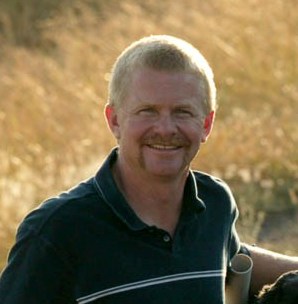A National Voice for Private Landowners
By: Amos S. Eno
Posted on:12/06/2011A Vision for How Landowners Can Take Greater Responsibility to Make a Difference
This blog is the final in our series from Jim Stone of Rolling Stone Ranch in Montana and the Blackfoot Challenge.
“The lesson I’ve learned,” Jim says in describing his decades of working with all kinds of people through the Blackfoot Challenge, “is that people I would never have dreamed of inviting to the table, such as the Wilderness Society and EPA, are the same folks that we are working with hand in hand right now! The Wilderness Society has turned out to be an amazing partner, with such wide reach across the planet and an amazing ability to really tell a story. I’ve learned we’re not that far apart: we all want clean water, fish, healthy habitat, and to be able to make a living on working landscapes.

“We treat government differently,” Jim continues, “but they’re just like you and me. What we need is to break down the funky barriers that we sometimes put up between us. When people disagree with me I want them to ask me, ‘So why are you so passionate?’ - but don’t call me names! There’s a mentality of fear about people taking over, but I say the federal government has done what they can do. It’s time to get landowners involved and say, ‘let’s go to work!’”
Taking responsibility rather than pointing fingers? This guy is more radical than I thought!
“I don’t want to be a political force, but I do want to see the country move in a better direction," Jim says. "If it doesn’t, my son will be having this same conversation when he’s grown.”
I asked Jim what motivates him. “I’ve got an interest in seeing the bigger picture - seeing all the things get done that we can’t do here in Montana alone. All my neighbors across the country should be part of Partners for Conservation. We have representatives from many states on our board, and if you ask them, they’ll say we absolutely have to organize - it might be too late for some issues, but we need to do it.”
You might not think that landowners from such disparate places as the Arizona high desert, Montana’s Bitterroot or Florida’s pine forests could have that much in common. But Jim says, “It’s absolutely amazing how much we have in common! From Mississippi to California, the folks that are coming together are movers and shakers. It’s not about cows, or money, or large land ownerships. What we have in common is a passion for the land. Just because we get snow doesn’t mean we don’t have things in common with people in Florida!”
I believe Jim’s point is incredibly important: however you earn your living from the land, it’s how your management interacts with fish and wildlife and how you choose to restore habitat or enhance management that landowners have in common. “Take the Farm Bill,” says Jim, “the critical thing on the chopping block right now. We - PFC - wrote a letter to the ‘super committee’ and our representative on the Agriculture Committee telling them that folks from across the country value the Farm Bill’s Conservation Title. In general, we need more boots on the ground, not just money. We need folks interacting with private landowners and the science behind it.”
“Everything is not perfect, but yet, if you had asked me 10 years ago, I’d have said no way all these landowners could work together. But it is working! Right now, we communicate with others on broad issues, but we really need partnerships working together. We’re struggling with how to do this. For example, academia has plans for the ‘Crown of the Continent’ region that includes the Blackfoot and part of southern Canada. They’ve written up how to save sites, species, etc. I’m one of the only landowners that goes to their meetings. I say, ‘Well that’s all great guys, but where are the landowners, and how do you sell it?’
“They say, ‘Well Jim, how do we get the landowners to the table?’ I don’t know if I can even answer that. We need a pattern to move conservation plans and grand visions such as America’s Great Outdoors through administrations and generations, so that the vision doesn’t change with each new administration. How do we get it done on the ground? We may not have all the answers yet, but this is exactly what Partners for Conservation seeks to do."
Around the country, there are other networks of private landowners focusing on specific projects or goals they want to achieve. But PFC will not be doing projects because their partners are already doing them. “We’re building a network of information about from-the-ground-up conservation. The goal is for PFC to provide the bottom-up initiatives that can be sustained socially and politically. The million dollar question is how to do it.”
Jim concludes they haven’t seen enough success yet. But he’s confident. “When we start getting results and having success, you’ll see more landowners jump on the bandwagon.”
I have no doubt.
 Sign In
Sign In
 Sign In
Sign In
